Low-Carb Pasta: 9 Powerful Reasons to Make the Switch!
For generations, pasta has reigned supreme as a culinary comfort, a versatile staple gracing tables across cultures with its satisfying chew and boundless adaptability. Yet, as our understanding of nutrition deepens and dietary preferences evolve, the traditional, carbohydrate-heavy noodle often finds itself at a crossroads with contemporary health aspirations.
This intersection is precisely where the transformative potential of “low-carb pasta” emerges. This is not just a replacement; rather, it represents a significant transformation within the realm of culinary awareness. It beckons us to reconsider our relationship with this beloved food, promising a harmonious convergence of flavor, texture, and profound well-being.
This discourse will meticulously unravel nine potent justifications for embarking on this culinary transition, illuminating how a simple switch can profoundly reshape your dietary landscape, elevating both your health and your epicurean adventures.
Why Choose Low-Carb Pasta? Unveiling the Health Benefits
The culinary landscape, perpetually in flux, now presents a compelling argument for a dietary pivot: the embrace of low-carb pasta. This isn’t merely a fleeting trend; it represents a profound re-evaluation of how we nourish our bodies, particularly in an era where metabolic health and sustained vitality are paramount. The decision to integrate low-carb pasta into one’s diet transcends simple preference; it is a strategic choice underpinned by a robust array of physiological advantages that conventional pasta, for all its comforting familiarity, simply cannot offer.
From the intricate dance of blood sugar regulation to the nuanced orchestration of weight management and the delicate balance of digestive well-being, the benefits are both pervasive and deeply impactful. This section will meticulously dissect these foundational health benefits, illuminating why this seemingly minor dietary adjustment can catalyze a significant transformation in your overall health trajectory.
Stabilized Blood Sugar with Low-Carb Pasta
For far too long, the delightful experience of a pasta meal has been inextricably linked with a subsequent, often unwelcome, physiological aftermath: a precipitous surge in blood glucose levels. This glycemic rollercoaster, a hallmark of traditional, refined carbohydrate-rich pastas, is not merely an inconvenience; it is a significant metabolic stressor.
The rapid influx of glucose necessitates an equally rapid and substantial release of insulin, the body’s primary sugar-regulating hormone. While essential, chronic and exaggerated insulin responses can contribute to insulin resistance, a precursor to type 2 diabetes, and are often implicated in energy crashes, heightened cravings, and the insidious accumulation of visceral fat.
Herein resides the profound benefit of “low-carb pasta.” Crafted from innovative ingredients such as the remarkable konjac root, the protein-rich lupini bean, or the subtly fibrous hearts of palm, these alternatives fundamentally alter the post-prandial glycemic response. Their significantly reduced net carbohydrate content translates directly into a far more gradual and controlled absorption of glucose into the bloodstream.
This consistent liberation of energy cultivates a state of metabolic harmony, artfully bypassing the sharp ascents and precipitous descents typical of conventional pasta consumption. The result? A palpable sense of sustained energy throughout the day, a notable reduction in the often-debilitating mid-afternoon slump, and a crucial step towards safeguarding long-term metabolic health. Choosing low-carb pasta is not just changing your diet; it’s a smart choice for steady energy, better concentration, and a way to protect yourself from common metabolic issues today.
Enhanced Weight Management with Low-Carb Pasta
The intricate dance of weight management often hinges on a delicate balance between caloric intake and expenditure. Yet, the subjective experience of hunger and satiety plays an equally pivotal role.
Traditional pasta, despite its often substantial caloric contribution, frequently fails to deliver lasting fullness. This leads to a frustrating cycle of post-meal hunger and subsequent snacking. This occurrence is largely attributable to its swift digestion and the ensuing rapid onset of hunger pangs.
In stark contrast, low-carb pasta emerges as a formidable ally in the pursuit of sustainable weight management. This is primarily due to its inherently superior nutritional profile, particularly its elevated fiber and protein content. These two macronutrients are universally recognized for their remarkable capacity to induce and prolong feelings of satiety.
Fiber, a non-digestible carbohydrate, expands in the digestive tract, creating a physical sense of fullness. Protein, the building block of muscle, requires more energy to digest and has a powerful impact on appetite-regulating hormones. Consequently, incorporating low-carb pasta into your meals means you are likely to feel satisfied for longer periods, naturally reducing the urge to consume additional calories between meals.
This inherent satiating power translates into a more effortless and sustainable reduction in overall caloric intake. It circumvents the need for draconian portion control or the gnawing sensation of deprivation that often sabotages weight loss efforts. So, low-carb pasta is more than just something to eat; it helps people manage their weight more easily and encourages a positive relationship with food that focuses on both nutrition and real satisfaction.
Digestive Harmony from Low-Carb Pasta
The intricate ecosystem of the human gut, a veritable metropolis of microorganisms, plays an indispensable role in everything from nutrient absorption and immune function to even our emotional well-being. A diet deficient in dietary fiber, a common characteristic of modern Western eating patterns, can disrupt this delicate balance, leading to a cascade of uncomfortable digestive issues. Traditional pasta, while a source of carbohydrates, often contributes minimally to our daily fiber requirements.
In this imbalance, “low-carb pasta” demonstrates its transformative power, acting as a potent catalyst to foster profound digestive harmony. Many varieties of low-carb pasta are veritable powerhouses of this often-underestimated nutrient. Consider, for instance, the remarkable properties of konjac, a primary ingredient in many shirataki noodles, which is rich in glucomannan fiber. This soluble fiber acts as a prebiotic, nourishing the beneficial bacteria within the gut microbiome, thereby promoting a flourishing and diverse microbial community. In the same way, pasta alternatives made from legumes like lupini beans are high in both soluble and insoluble fibers, which each help with digestion in different ways.
Insoluble fiber helps make stool larger, which makes it easier to have regular bowel movements and stops constipation, while soluble fiber turns into a gel that slows down digestion, helps absorb nutrients, and keeps cholesterol levels in check. Levels are in check. consciously integrating low-carb pasta into your diet, you are not merely making a healthier food choice; you are actively investing in the vital This active effort to improve your digestion leads to feeling more comfortable, less bloated, and a better-functioning body, which can ultimately improve your overall health and create a strong sense of balance inside you.
Unlocking the Delicious Diversity of Low-Carb Pasta
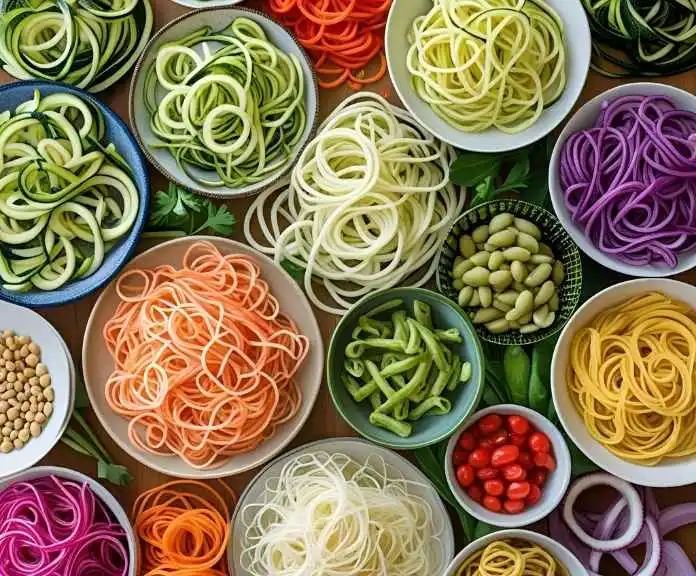
For decades, the very notion of pasta has been inextricably linked with wheat, a culinary monolith that, while undeniably delicious, presents significant dietary challenges for many. Yet, the landscape of modern gastronomy is a vibrant tapestry woven with innovation, and nowhere is this more evident than in the burgeoning realm of low-carb pasta alternatives.
The search for alternative pasta is not merely about finding a substitute; it is about discovering an entirely new universe of textures, flavors, and nutritional profiles that can elevate your meals to unprecedented heights. Far from being a concession, embracing these alternatives is an act of culinary liberation, opening doors to diverse ingredients and preparation methods that can surprise and delight even the most discerning palate.
This section will embark on a fascinating journey through this burgeoning world, unveiling the ingenious ways in which nature and human ingenuity have conspired to create pasta experiences that are both deeply satisfying and profoundly health-conscious.
Gluten-Free Low-Carb Pasta Options
For a significant and growing segment of the population, the traditional wheat-based pasta, a culinary cornerstone for centuries, has become an unwelcome dietary antagonist. Whether due to the pervasive challenges of celiac disease, the nuanced sensitivities of gluten intolerance, or a conscious lifestyle choice, the demand for truly satisfying gluten-free alternatives has surged.
Historically, this quest often led to compromises: pastas that crumbled, lacked the desired chew, or simply failed to capture the essence of their wheat-laden counterparts. However, the innovative spirit driving the low-carb pasta revolution has simultaneously ushered in an era of remarkably successful gluten-free options, offering a genuine culinary bridge for those who must, or choose to, avoid gluten.
Consider the elegant simplicity of zucchini noodles (often affectionately termed “zoodles”) or the robust, slightly sweet character of spaghetti squash. These natural, vegetable-based alternatives are inherently gluten-free and offer a delightful textural contrast, readily absorbing the flavors of your chosen sauce.
Beyond these fresh produce marvels, the market has witnessed the rise of meticulously crafted products like hearts of palm pasta (such as Palmini), which mimic the shape and bite of pasta and deliver a surprisingly authentic pasta feel, yet remain gluten-free and impressively low in carbs. Similarly, the almost translucent and remarkably versatile shirataki noodles (derived from the konjac plant) provide a neutral canvas for a myriad of dishes, their unique texture making them a favorite among those seeking a truly carb-free and gluten-free option.
These advancements mean that the joy of a hearty pasta dish is no longer exclusive to those who consume gluten; it is now a universally accessible pleasure, allowing everyone to partake in the communal and comforting ritual of a pasta meal without dietary apprehension.
Nutrient-Dense Low-Carb Pasta Varieties
Besides just having fewer carbohydrates, a key benefit of low-carb pasta is that it can be packed with more nutrients. Unlike their traditional counterparts, which primarily offer a concentrated source of carbohydrates, many of these innovative pasta alternatives are veritable powerhouses of essential vitamins, minerals, and macronutrients.
This shift transforms what was once a relatively empty caloric vehicle into a vibrant conduit for holistic nourishment. Pasta made from legumes—like lupini beans and edamame—is becoming increasingly popular among health-conscious eaters. These aren’t just low in net carbs; they are remarkably rich in plant-based protein, a crucial component for muscle repair, satiety, and overall cellular function.
Furthermore, they often boast impressive fiber content, contributing to digestive health and sustained energy release. The humble lupini bean, for example, is a nutritional marvel, offering a significant dose of protein and fiber alongside vital micronutrients like iron and magnesium, elements often lacking in the standard Western diet. Similarly, the vibrant green edamame pasta delivers not only protein and fiber but also a spectrum of vitamins, including vitamin K and folate.
Even the more subtle hearts of palm pasta (like Palmini) contribute valuable fiber and potassium, adding a nutritional boost to your meal. This emphasis on nutrient density means that every forkful of low-carb pasta is not just satisfying your craving; it is actively contributing to your body’s intricate needs, supporting and benefiting your bones, powering your metabolism, and keeping your immune system strong. It’s a testament to the fact that dietary restriction doesn’t have to equate to nutritional compromise; in the world of low-carb pasta, it often signifies a profound upgrade in the superior caliber and profound effectiveness of your everyday nourishment.
Popular Low-Carb Pasta Brands to Try
The burgeoning market for low-carb pasta has given rise to a fascinating array of brands, each striving to deliver the optimal balance of taste, texture, and nutritional integrity. Navigating this diverse landscape can be both exciting and, at times, a little overwhelming.
To assist in your culinary exploration, let’s highlight some of the most popular and highly regarded brands that have successfully carved out a niche in the health-conscious consumer’s pantry. Brands like Kaizen have garnered significant attention for their innovative use of lupini beans, creating pastas that boast an impressive protein and fiber profile while maintaining a remarkably low net carbohydrate count. Their commitment to clean ingredients and authentic pasta shapes makes them a go-to for those seeking a satisfying and nutritious alternative.
Palmini has made waves by creatively using hearts of palm to craft a pasta substitute that’s both light and versatile. Their products, available in various cuts like linguine, angel hair, and lasagna, offer a surprisingly neutral flavor profile and a firm, al dente bite, making them an excellent canvas for a wide range of sauces.
For those seeking a truly minimal-calorie and carb-free option, Miracle Noodle and It’s Skinny have become household names. These brands focus on shirataki noodles, made from the konjac plant, which have almost no calories and no carbs, giving them a unique, slightly jelly-like texture that easily takes on the flavors of other ingredients. While their texture is distinct, their versatility in Asian-inspired dishes and as a base for hearty sauces is undeniable.
Lastly, for those who appreciate a slightly more familiar, yet still health-conscious, option, brands like Banza (though higher in carbs than true low-carb options, they offer a significant protein and fiber boost compared to traditional pasta) and ZENB (utilizing yellow peas for a nutrient-rich, gluten-free pasta) provide excellent stepping stones into the world of healthier pasta choices. Each of these brands represents a commitment to innovation, offering delicious and accessible ways to integrate low-carb pasta into your daily meals, proving that dietary consciousness need not come at the expense of culinary enjoyment.
Low-Carb Pasta Cooking Tips for Delicious Results
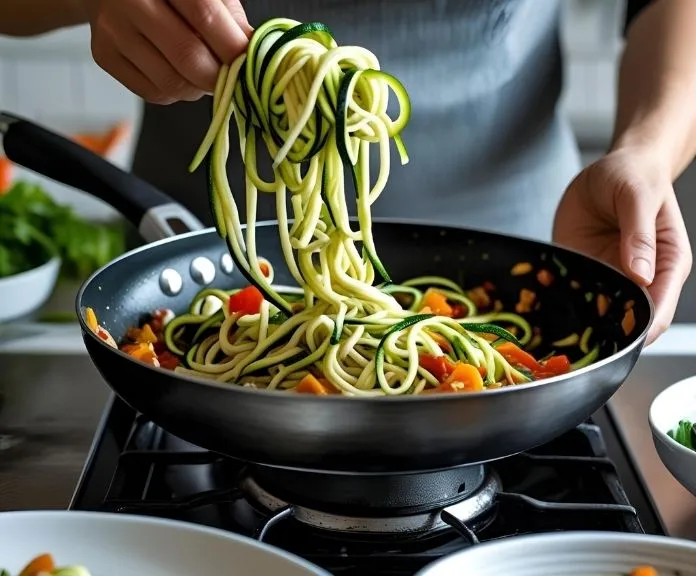
The transition to low-carb pasta is not merely a dietary shift; it is a culinary adventure, an opportunity to refine your cooking techniques and expand your gastronomic repertoire. While the basic rules for cooking pasta still apply, these new low-carb options have special traits that, if you understand and appreciate them, can help you make amazing dishes.
Dismissing low-carb pasta as a mere compromise overlooks the nuanced art of preparing it to perfection. Mastering its preparation involves a keen awareness of its distinct properties, from its varied textures to its subtle flavor profiles. This section will discuss the essential strategies and insider tips that will empower you to navigate the exciting world of low-carb pasta with confidence, ensuring every dish and your meal stands as a symbol of wholesome choices and culinary elegance.
From achieving that elusive al dente bite to harmonizing with the perfect sauce, these insights will guide you toward culinary triumphs, proving that healthy eating can be an immensely rewarding and delicious endeavor.
Mastering the Texture of Low-Carb Pasta
One of the most common apprehensions when venturing into the realm of low-carb pasta revolves around texture. The familiar, satisfying chew of traditional durum wheat pasta is deeply ingrained in our culinary psyche, and the fear of a rubbery, mushy, or overly brittle substitute can be a significant deterrent.
However, with a thorough understanding of each low-carb pasta variety and the appropriate techniques, achieving the perfect al dente texture becomes attainable—every time. Recognizing the differences in low-carb pastas and tailoring their cooking methods accordingly is crucial.
For instance, delicate shirataki noodles (konjac-based) require minimal cooking; often, a quick rinse and a brief sauté or addition to a hot sauce are sufficient to warm them through and remove any residual moisture, preventing a watery dish. Overdo it, and shirataki noodles may become limp and far less enjoyable to eat.
Conversely, lupini bean pasta or other legume-based varieties, while more robust, still demand careful attention. They often cook faster than traditional pasta, so constant vigilance and taste-testing are crucial to prevent them from becoming mushy. A common pitfall is to treat them exactly like wheat pasta; instead, aim for a slightly firmer bite, as they tend to soften further upon standing.
Hearts of palm pasta (like Palmini) arrives pre-cooked and typically only needs to be heated through or briefly simmered to achieve a softer consistency if desired. Its inherent firmness makes it incredibly resilient to overcooking, offering a forgiving option for beginners.
For vegetable-based alternatives like zucchini noodles or spaghetti squash, the goal is to cook them just until tender-crisp, retaining a pleasant bite without turning them into a watery mess. Excellent methods include sautéing, roasting, or even spiralizing them fresh and adding them directly to a hot sauce.
The secret to mastering texture across all these varieties is a combination of precise timing, understanding the unique properties of each ingredient, and a willingness to experiment. Embrace the subtle differences, and you will discover an array of textures that can elevate your low-carb pasta dishes from mere substitutes to culinary masterpieces in their own right.
Delicious Low-Carb Pasta Recipes
The true test of any culinary innovation lies in its ability to translate into genuinely delicious and satisfying meals. Low-carb pasta, far from being a mere dietary obligation, offers an expansive canvas for creating dishes that are both profoundly flavorful and remarkably healthy.
The beauty of these alternatives is their inherent versatility, allowing for a seamless integration into a myriad of cuisines and flavor profiles. Consider, for instance, the classic Italian repertoire: a rich, slow-simmered bolognese, traditionally served over tagliatelle, finds a magnificent new home atop a bed of zucchini noodles or lupini bean fettuccine.
The fresh, vibrant notes of the zucchini or the subtle earthiness of the lupini complement the savory depth of the meat sauce, creating a harmonious symphony of flavors. For those yearning for a creamy indulgence, a decadent alfredo sauce, perhaps enriched with cauliflower purée for added nutrients, pairs exquisitely with shirataki noodles or hearts of palm linguine.
The neutral flavor of shirataki allows the richness of the sauce to truly shine, while the slight bite of hearts of palm provides a delightful textural counterpoint. Low-carb pasta goes far beyond Italian favorites, easily crossing into a world of diverse cuisines.
Imagine a vibrant Asian-inspired stir-fry, brimming with crisp vegetables and succulent protein, tossed with delicate shirataki ramen noodles, absorbing every aromatic nuance of the soy-ginger glaze. Or a comforting, cheesy baked casserole, where layers of lupini lasagna sheets replace traditional pasta, creating a hearty, low-carb masterpiece that satisfies the soul without compromising dietary goals.
The key to crafting truly delicious low-carb pasta recipes lies in embracing the unique characteristics of each pasta type and allowing them to inspire new flavor combinations. Try bold pestos, zesty lemon-garlic dressings, or creative plant-based cream sauces. The culinary journey with low-carb pasta is one of discovery, proving that healthy eating can be an exciting, flavorful, and endlessly creative endeavor, transforming your kitchen into a laboratory of delicious innovation.
Pairing Sauces with Low-Carb Pasta
The success of any pasta dish, regardless of its carbohydrate content, hinges significantly on the harmonious marriage between the pasta itself and its accompanying sauce. When transitioning to low-carb pasta, this pairing becomes an even more nuanced art, as the unique textures and subtle flavor profiles of these alternatives can either be enhanced or overwhelmed by the wrong sauce choice.
The guiding principle is to consider the inherent characteristics of your chosen low-carb pasta and select a sauce that complements rather than competes. For instance, the delicate, almost ethereal quality of shirataki noodles (konjac-based) makes them an ideal canvas for lighter, more aromatic sauces.
Imagine bright pestos bursting with fresh basil and pine nuts, or a straightforward yet refined lemon-garlic butter sauce that highlights the delicate flavors of shirataki noodles. Their neutral flavor profile means they readily absorb the essence of the sauce, making them perfect for Asian-inspired broths or light seafood preparations.
Conversely, the more robust and substantial bite of lupini bean pasta or other legume-based varieties can stand up to heartier, more intensely flavored sauces. A slow-cooked ragu, rich with tomatoes and savory meats, or a creamy mushroom sauce would find a perfect partner in these more resilient low-carb options. Their slight earthiness can even add an intriguing depth to the overall flavor profile.
Hearts of palm pasta, such as Palmini, offers a firm, subtly fibrous bite and a gentle flavor reminiscent of artichokes, making it highly adaptable. It excels with both lighter, fresh sauces, such as a vibrant primavera with crisp vegetables, and richer, cream-based concoctions. Its ability to maintain its integrity makes it suitable for baked dishes or those requiring longer simmering times.
For vegetable-based pastas like zucchini noodles or spaghetti squash, the goal is often to avoid overly watery sauces that can dilute their natural flavors. Pesto, olive oil-based sauces, or thicker, reduced tomato sauces work exceptionally well, clinging to the strands without creating excess moisture.
Ultimately, the art of pairing sauces with low-carb pasta is an exciting journey of discovery. By understanding the inherent qualities of each low-carb alternative and experimenting with a diverse palette of sauces, you can unlock a world of culinary possibilities, turning every meal into a joyful blend of wellness and delicious flavor.
Low-Carb Pasta and Weight Management: A Delicious Strategy

Dietary choices play a crucial role in the complex and often frustrating journey of weight management. For many, the very thought of a weight-conscious diet conjures images of deprivation, bland meals, and the agonizing sacrifice of beloved foods.
Yet, within this landscape of perceived limitations, low-carb pasta emerges not as a mere dietary restriction but as a genuinely delicious and remarkably effective strategy for achieving and sustaining a healthy weight. This is not about eschewing flavor or culinary satisfaction; it is about intelligently re-engineering your meals to align with your physiological needs, stimulating a feeling of fullness and metabolic efficiency that traditional, high-carbohydrate options often undermine.
The integration of low-carb pasta into a weight management plan represents a paradigm shift, transforming the pursuit of a healthier body into an enjoyable and sustainable culinary experience. This section will meticulously unpack the multifaceted ways in which low-carb pasta can become your most valuable ally in this endeavor, from promoting sustainable weight loss to mastering the art of calorie control and cultivating a profound sense of lasting satiety.
Low-Carb Pasta for Sustainable Weight Loss
The pursuit of sustainable weight loss is often characterized by a relentless battle against hunger, cravings, and the insidious metabolic adaptations that can sabotage even the most well-intentioned efforts. Traditional diets that rely a lot on refined carbohydrates often make hunger and cravings worse, causing a frustrating cycle of dieting and gaining weight back.
This phenomenon is where low-carb pasta truly shines as a key player in sustainable weight loss. The fundamental mechanism at play is its ability to mitigate the rapid fluctuations in blood glucose and insulin that are characteristic of high-carbohydrate meals. When you consume traditional pasta, the swift breakdown of starches into simple sugars triggers a significant insulin response.
While insulin is vital for shuttling glucose into cells for energy, chronically elevated levels can promote fat storage and inhibit the body’s ability to access its fat reserves for fuel. By contrast, low-carb pasta, with its significantly reduced carbohydrate load and often higher fiber and protein content, elicits a far more modest and sustained insulin response. This metabolic shift encourages the body to tap into stored fat for energy, a process known as fat oxidation, which is crucial for effective weight loss.
Furthermore, the inherent satiating properties of low-carb pasta, stemming from its fiber and protein, mean that you feel fuller for longer periods. This prolonged satiety naturally reduces overall caloric intake without the conscious effort of portion control or the gnawing sensation of deprivation. Imagine enjoying a satisfying, pasta-based meal that leaves you feeling content and energized, rather than hungry and lethargic just an hour later.
This sustained fullness translates directly into fewer unplanned snacks, reduced overeating at subsequent meals, and a more consistent adherence to your dietary goals. The beauty of integrating low-carb pasta into your weight loss strategy is its capacity to transform the experience from one of arduous restriction to one of satisfying nourishment, making the journey towards a healthier weight not only achievable but genuinely enjoyable and, most importantly, sustainable in the long term.
Calorie Control with Low-Carb Pasta
At its most fundamental level, weight management often boils down to the principle of energy balance: consuming fewer calories than the body expends. While this equation appears deceptively simple, its practical application can be fraught with challenges, particularly when dealing with foods that are calorically dense yet offer limited satiety.
Traditional pasta, for all its culinary appeal, can be a significant contributor to inadvertent overconsumption. A typical serving, especially when paired with rich sauces, can quickly accumulate a substantial caloric load, often leaving individuals feeling less than fully satisfied and prompting further eating.
This aspect is where low-carb pasta emerges as a remarkably effective tool for meticulous calorie control, not through stringent restriction, but through intelligent food choices that naturally align with a reduced energy intake. Many low-carb pasta varieties, particularly those derived from konjac (like shirataki noodles) or hearts of palm, boast an astonishingly low caloric density.
Shirataki noodles, for instance, often contain fewer than 10 calories per serving, a stark contrast to the hundreds found in an equivalent portion of traditional pasta. This dramatic reduction in caloric contribution per volume allows for larger, more satisfying meal portions without the accompanying caloric burden. Imagine a generous bowl of “pasta” that feels indulgent yet contributes minimally to your daily caloric tally.
This natural low-calorie quality, along with the filling effects of fiber and protein, works together effectively. This natural low-calorie quality, along with the filling effects of fiber and protein, works together effectively. You can construct meals that are visually appealing, texturally satisfying, and nutritionally robust, all while maintaining a precise and effortless control over your caloric intake.
This approach transforms calorie counting from a tedious, often frustrating exercise into an intuitive process, where the very act of choosing low-carb pasta inherently supports your weight management objectives. It empowers you to enjoy the ritual of a pasta meal, savoring every bite, secure in the knowledge that you are making a choice that actively contributes to your health and well-being, rather than undermining it.
Satiety and Low-Carb Pasta
In the intricate lexicon of human physiology, few concepts are as pivotal to successful weight management and overall dietary adherence as satiety—the profound and lasting sensation of fullness and satisfaction that signals the cessation of eating. The ephemeral nature of satiety, or its conspicuous absence, is often the silent saboteur of even the most meticulously planned dietary interventions.
Traditional pasta, despite its caloric density, frequently falls short in delivering sustained satiety, leading to a rapid return of hunger and the inevitable temptation to snack or overeat. This phenomenon is largely attributable to its rapid digestion and absorption, which can lead to a quick spike and subsequent crash in blood sugar, leaving the body craving more fuel.
In stark contrast, low-carb pasta emerges as a champion of sustained satiety, fundamentally altering the post-meal experience and empowering individuals to maintain dietary control with remarkable ease. The secret lies in its meticulously balanced macronutrient profile, particularly its elevated content of dietary fiber and protein.
Fiber, a non-digestible carbohydrate, plays a dual role: it adds significant bulk to the meal, physically distending the stomach and sending signals of fullness to the brain, and it delays digestion, helping you feel full for longer. Protein, the other key player, is renowned for its superior satiating effect compared to carbohydrates or fats. It triggers the release of specific gut hormones, such as cholecystokinin (CCK) and peptide YY (PYY), which communicate signals of fullness and satisfaction to the brain, effectively curbing appetite.
When these two powerful macronutrients are combined, as they are in many low-carb pasta varieties (e.g., lupini bean pasta, edamame pasta), the synergistic effect on satiety is profound. Imagine a meal that not only tastes delicious but also leaves you feeling genuinely content and satisfied for hours, eliminating the incessant mental chatter about your next meal or snack.
This lasting feeling of fullness is not just a nice bonus; it plays an important role in helping you eat less overall, curb sudden cravings, and develop a healthier, more natural connection with food. By prioritizing satiety through the intelligent inclusion of low-carb pasta, you transform your dietary approach from one of constant vigilance and struggle to one of effortless control and profound satisfaction, making your weight management journey a far more enjoyable and ultimately successful endeavor.
Beyond the Plate: The Lifestyle Impact of Low-Carb Pasta

The decision to embrace low-carb pasta transcends the mere confines of a dietary choice; it represents a profound paradigm shift, a recalibration of one’s relationship with food that reverberates throughout the entirety of daily life.
It’s not just about what you eat; it’s about how smart food choices affect your energy, mood, cognition, and well-being. The impact of integrating low-carb pasta into your culinary repertoire extends far beyond the immediate satisfaction of a delicious meal; it subtly yet powerfully influences your physiological and psychological landscape, fostering a more vibrant, resilient, and empowered existence.
This section will carefully look at the many lifestyle benefits, showing how a simple change in your diet can lead to many positive changes, like reducing chronic inflammation, maintaining high energy levels, taking charge of your eating habits, and adopting a healthier, balanced way of living.
Reduced Inflammation with Low-Carb Pasta
Chronic, low-grade inflammation is increasingly recognized as a silent, insidious force underlying a vast spectrum of modern ailments, from cardiovascular disease and metabolic syndrome to neurodegenerative disorders and certain cancers. Our dietary choices play a pivotal role in either fanning the flames of this systemic inflammation or actively quelling its destructive potential.
Traditional diets, often characterized by an abundance of refined carbohydrates and sugars, can inadvertently contribute to a pro-inflammatory state within the body. In stark contrast, the intelligent integration of low-carb pasta into one’s diet can serve as a powerful anti-inflammatory intervention.
Many low-carb pasta varieties, particularly those derived from nutrient-dense vegetables or legumes, are inherently rich in compounds that actively combat inflammation. For example, the rich fiber in lupini beans and hearts of palm pasta serves as a powerful prebiotic, encouraging a healthy and diverse gut microbiome. A healthy gut, in turn, is intrinsically linked to a robust immune system and a reduced inflammatory response throughout the body [1].
Furthermore, by significantly reducing the intake of rapidly digestible carbohydrates, low-carb pasta helps to stabilize blood sugar levels, thereby mitigating the inflammatory cascade often triggered by glucose spikes and subsequent insulin surges [2]. This metabolic equilibrium is important for preserving cellular health and preventing the oxidative stress that can fuel inflammation. Embracing low-carb pasta is, therefore, not merely a culinary preference; it is a proactive strategy for cultivating an internal environment conducive to optimal health and longevity.
Sustained Energy from Low-Carb Pasta
The modern human experience is often characterized by a nonstop search for energy: a quest to overcome the pervasive mid-afternoon slump, to maintain focus through demanding tasks, and to simply feel vibrant and alive from dawn until dusk. Traditional diets, heavily reliant on rapidly digestible carbohydrates, frequently contribute to a frustrating cycle of energy peaks and valleys.
The swift influx of glucose from such foods provides a momentary surge, only to be followed by an inevitable, often debilitating, crash as insulin efficiently clears sugar from the bloodstream. This glycemic roller coaster leaves individuals feeling sluggish and unfocused and perpetually reaching for another quick fix.
The strategic integration of low-carb pasta offers a profound departure from this exhausting paradigm, ushering in an era of remarkably sustained and consistent energy levels. The fundamental difference lies in its macronutrient composition. Unlike conventional pasta, which is predominantly carbohydrate-based, low-carb alternatives are typically rich in dietary fiber and protein.
These macronutrients are digested and absorbed far more slowly, leading to a gradual and steady release of glucose into the bloodstream. This controlled energy delivery prevents the dramatic spikes and subsequent crashes that are the hallmark of high-glycemic foods. Imagine a continuous, gentle stream of fuel flowing to your cells, rather than an erratic series of gushes and trickles.
This consistent energy supply translates directly into enhanced cognitive function, improved physical stamina, and a general sense of unwavering vitality throughout your day. You’ll find yourself more productive, less prone to irritability, and better equipped to tackle both mental and physical challenges. For a deeper dive into how dietary choices impact your energy, consider exploring resources on the glycemic index and its effects. This sustained energy is not merely a pleasant side effect; it is a transformative benefit that empowers you to live a more active, engaged, and fulfilling life, free from the shackles of energy fluctuations. This is your guilt-free guide to low-carb pasta, so don’t forget to bookmark it!
Dietary Freedom with Low-Carb Pasta
For those navigating the often-challenging terrain of specific dietary protocols—be they ketogenic, low-carbohydrate, or gluten-free—the culinary landscape can sometimes feel restrictive, a constant negotiation between health goals and the desire for culinary enjoyment. The absence of beloved comfort foods, particularly pasta, has historically represented a significant emotional and practical hurdle, often leading to feelings of deprivation and, ultimately, a departure from well-intentioned dietary plans.
However, the revolutionary emergence of high-quality low-carb pasta alternatives has fundamentally reshaped this narrative, ushering in an unprecedented era of dietary freedom. This is not merely about finding a passable substitute; it is about reclaiming the joy of familiar meals, transforming dietary adherence from a burden into an empowering choice.
Imagine savoring a hearty spaghetti Bolognese, a creamy fettuccine alfredo, or a layered lasagna, all while remaining steadfastly committed to your low-carb or gluten-free principles. Brands like Palmini, Kaizen, and various shirataki noodle producers have meticulously engineered products that mimic the texture and versatility of traditional pasta with remarkable fidelity, allowing you to recreate cherished family recipes and explore new culinary horizons without compromise.
This newfound freedom extends beyond the plate; it impacts social interactions, making it easier to participate in shared meals and celebrations without feeling isolated or limited. It alleviates the mental burden of constant food vigilance, fostering a more relaxed and sustainable relationship with eating. The ability to enjoy the foods you love, adapted to your health needs, is profoundly liberating, transforming the dietary journey from one of sacrifice to one of abundant possibility. For a comprehensive guide to navigating this freedom, go to The Shame-Free Low Carb Pasta Bible (Bookmark This Now), your ultimate resource for guilt-free pasta enjoyment.
Embracing a Low-Carb Pasta Lifestyle
The journey towards optimal health is rarely a sprint; it is, more accurately, a marathon, punctuated by conscious choices and sustained commitment. The integration of low-carb pasta into your dietary regimen is not merely a fleeting trend or a temporary fix; it represents a foundational shift towards a more mindful, health-conscious lifestyle.
This embrace extends far beyond the individual meal, permeating the very fabric of your daily habits and long-term well-being. It signifies a proactive decision to prioritize sustained energy, metabolic stability, and profound digestive comfort, all while relishing the culinary delights that pasta has always offered.
By consistently choosing low-carb alternatives, you are actively cultivating a dietary pattern that supports a leaner physique, sharper cognitive function, and a reduced risk of chronic diseases. This lifestyle is characterized by a newfound appreciation for nutrient-dense ingredients, a willingness to explore diverse culinary traditions, and a liberation from the restrictive cycles of traditional dieting.
It creates a sense of autonomy, knowing that you can enjoy satisfying, flavorful meals without compromising your health objectives. Moreover, this shift often inspires a broader re-evaluation of other dietary habits, encouraging a holistic approach to nutrition that emphasizes whole, unprocessed foods. The ripple effect of this single change can be profound, leading to improved sleep, enhanced mood, and a greater overall sense of vitality. It is a testament to the power of small, consistent choices to catalyze monumental transformations.
For those ready to fully immerse themselves in this transformative culinary journey, The Shame-Free Low Carb Pasta Bible (Bookmark This Now) serves as an indispensable companion, offering a wealth of knowledge, recipes, and practical tips to seamlessly integrate low-carb pasta into every facet of your life. Adopt this way of living and unlock a world where wellness and delicious food go hand in hand.

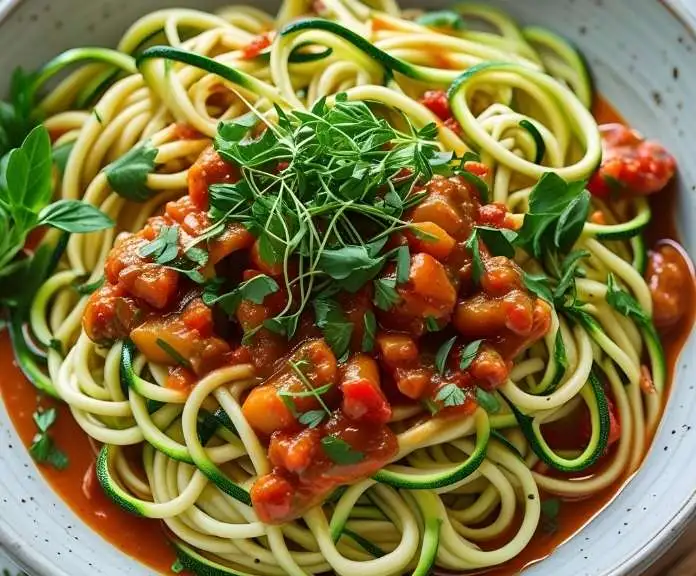
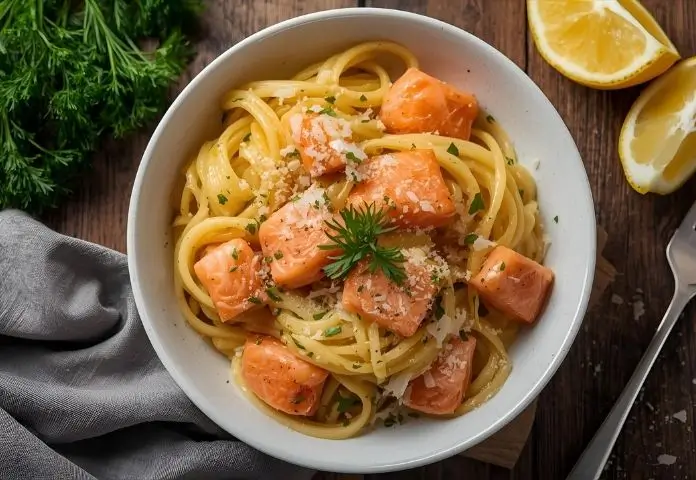
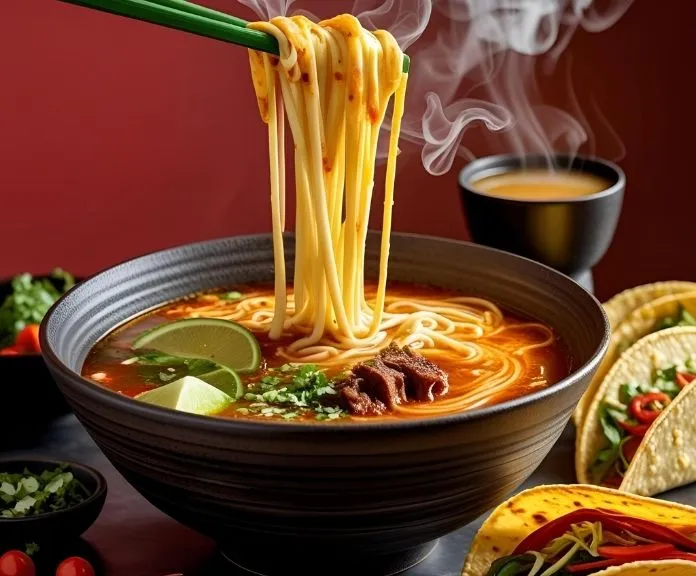
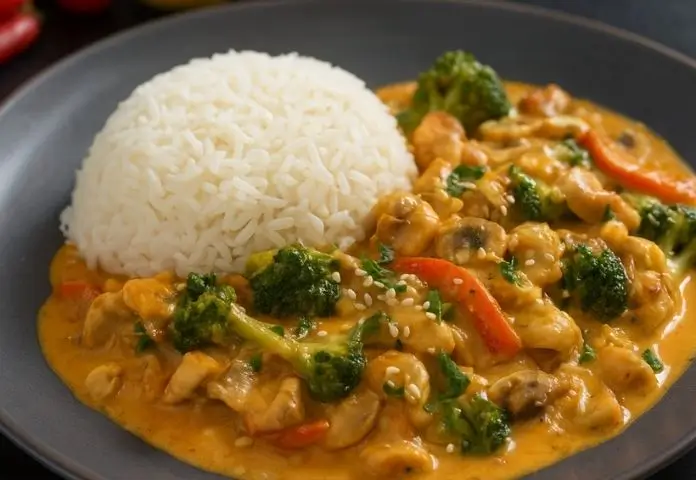

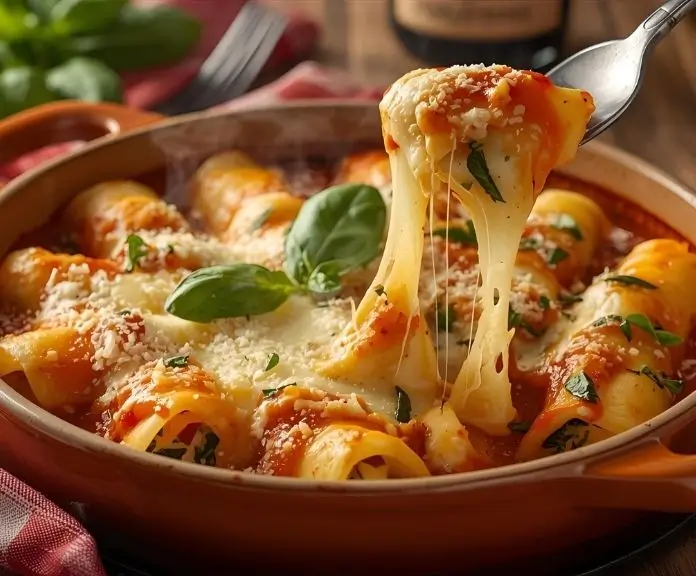
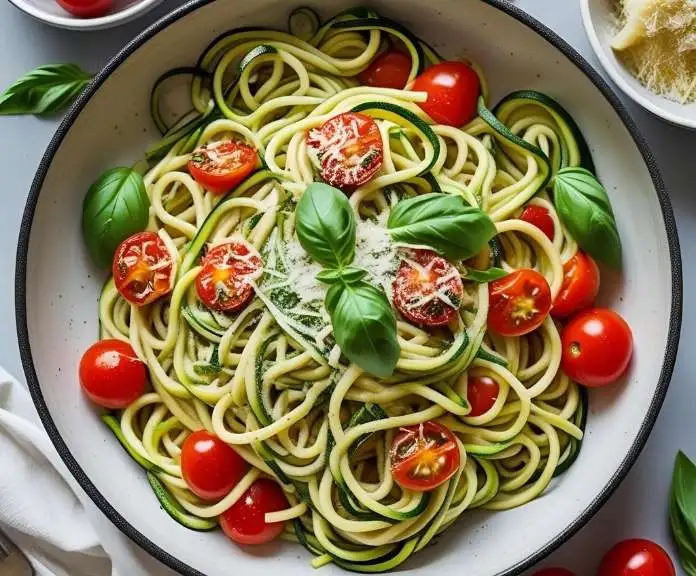
One Comment
Comments are closed.